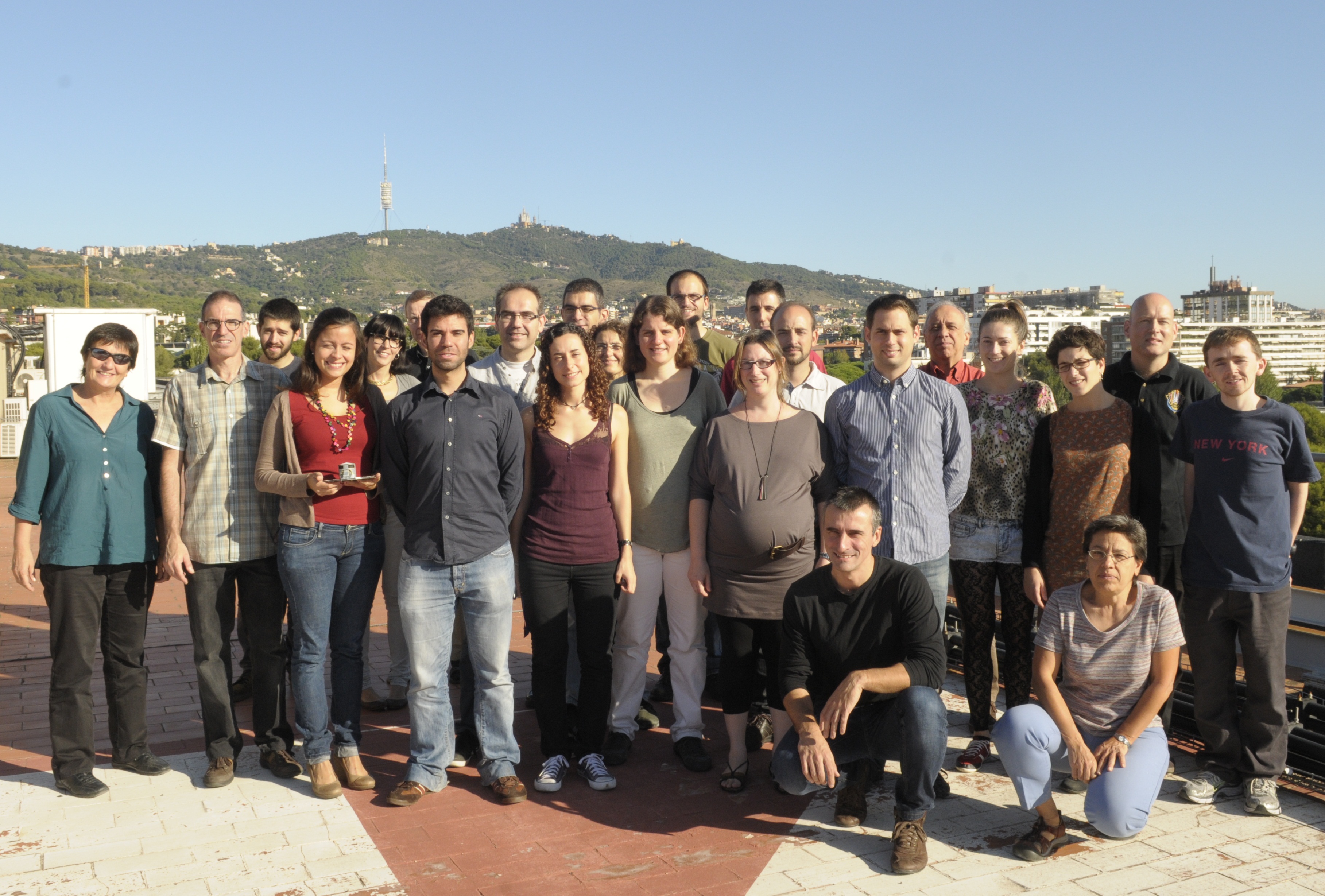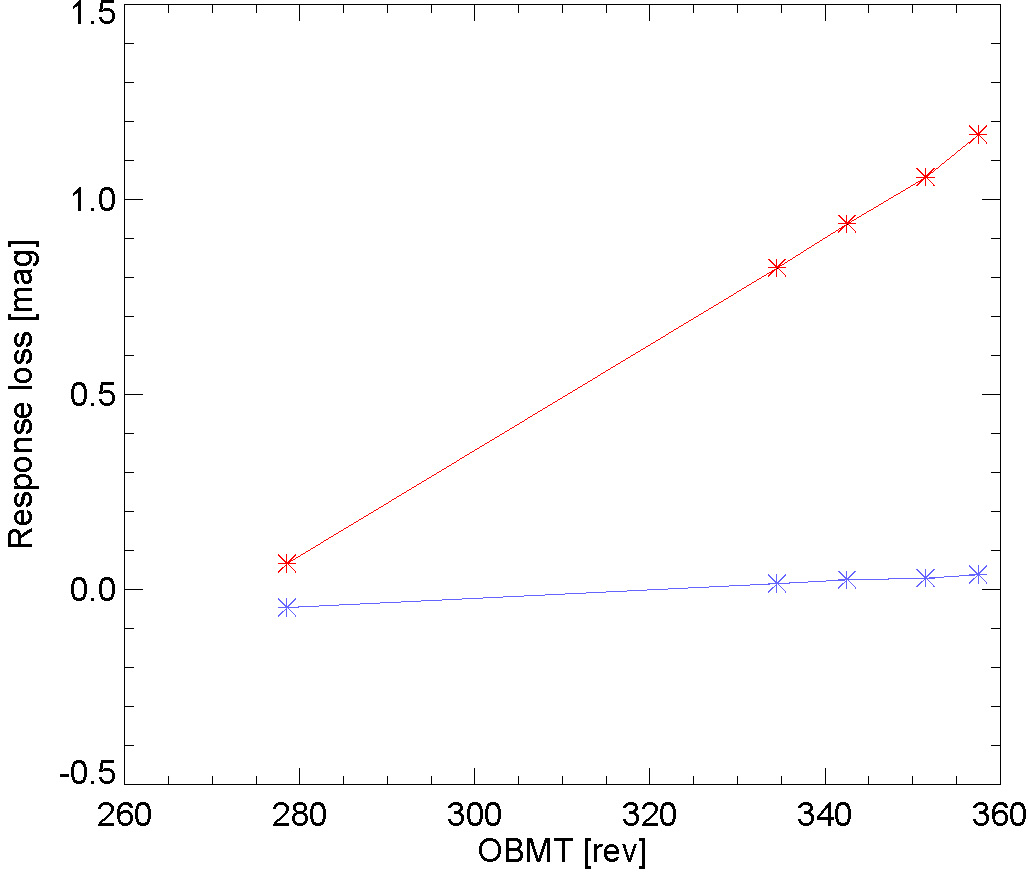news_20141219e - Gaia
"we spent January eagerly studying the very first data" |
||
| By Claus Fabricius, University of Barcelona | ||
| On 19 December 2013 several of us from the Barcelona team were witnessing the launch of Gaia from the Mission Operations Centre in Darmstadt. This was a tense moment, and the relief was great when we had the confirmation that Gaia was up there, it was talking to us, and the sunshield had unfolded. Now we could take a break over Christmas before real data would finally arrive. | ||
 |
||
| The Barcelona team in 2013 (from left to right): Francesca Figueras, Eduard Masana, Max Palmer, Erika Antiche, Eva Gallardo, Claus Fabricius, Juan J. González, Josep Manel Carrasco, Laia Casamiquela, Jordi Portell, Lola Balaguer, Maria Monguió, Santiago Roca, Mercè Romero, Daniel Molina, Javier Castañeda, Francesc Julbe, Marcial Clotet, Jordi Torra, Maria Czekaj, Nora Garralda, Carme Jordi, Holger Voss, Aidan Fries | ||
|
Back in Barcelona we spent January eagerly studying the very first data from the moment the focal plane was switched on shortly after New Year, and we were especially looking at the photometry. At this point the instrument was not in focus, and many important adjustments were still to be done. The data coming from Gaia was therefore not regular observations, but calibration mode data from a small part of the focal plane, and only for bright stars. This also meant that the data reduction pipelines were not operating, except for the more basic ones. Nevertheless, we had dug up some archaic computer code, and persuaded it to identify these brighter stars. In this way we could demonstrate that the two telescopes had a response close to what was expected. This was very satisfactory, because the high performance of Gaia is only possible if we get a sufficient signal. Then an ominous request arrived from ESA on 3 February: "Can DPAC (the scientific consortium doing the data analysis) prove, based on photometric data from stars, that telescope-2 has nominal transmission, which is also constant in time?" The reason for this question was that Airbus Defence & Space, the prime contractor responsible for delivering the satellite, saw a clear difference between the two telescopes when using the auxiliary instruments for monitoring the focus and the angles between the mirrors. Our first check used data from 9 January, and as everything had been normal, and the test a bit cumbersome, we had not looked into this again. Now it was time for a second look, and as we had already done such an analysis, the request from ESA soon landed here. In DPAC this was not really seen as all that urgent, and there was a brief discussion whether it could better be postponed. After all, everybody had already more than enough on their plates, and we would have the answer for free in a few weeks time, when the pipelines started. Fortunately, we decided to change priorities, and during the next day we analysed data from 23, 25, 27, and 29 January. We got a bit of a scare! As the figure shows, the response of telescope-1 (blue curve) showed only a small change during January, whereas telescope-2 (red curve) had lost 1.1 mag (a factor 2.75) in just twenty days. At this rate we would hardly be able to see anything fainter than Sirius by the end of the year. We immediately sent the results to ESA, and the same evening received an - as always - very polite reply from a senior officer saying: "Excellent work and horrible results!". |
||
 |
||
|
Figure 2: The response of the two Gaia telescopes during January 2014. Telescope-1 in blue and telescope-2 in red. The time axis (horizontal) covers the period 4 - 29 January. A response loss of 0.10 mag corresponds to 10%, while 1 mag is a factor 2.5. The signal from Gaia was compared with the expected signal calculated from the Tycho-2 catalogue that is based on ESA's Hipparcos mission. |
||
|
Our relief was therefore great when the response recovered completely a few days later after the optics had been heated, and the thin layer of ice - for it must indeed have been ice - evaporated. It is a well known phenomenon that spacecraft materials will release water vapour just after launch, which will condensate on the colder surfaces, e.g. on the optics. Precisely for this reason all mirrors have heaters built in, but we had thought that all ice had already been removed. In the following months we closely followed the development, and the condensation is still present, but developing at a much slower and manageable pace. Gaia is now steadily building up its survey and has already covered the whole sky for the first time. We still have a lot to learn about the details of the instrument, but what has been seen up to now confirms the promises of Gaia. The first data release is on the horizon in about one and a half year's time, and we can hardly wait. |
||
|
Image credits Figure 1: University of Barcelona Figure 2: ESA/Gaia/DPAC/UB |
||

